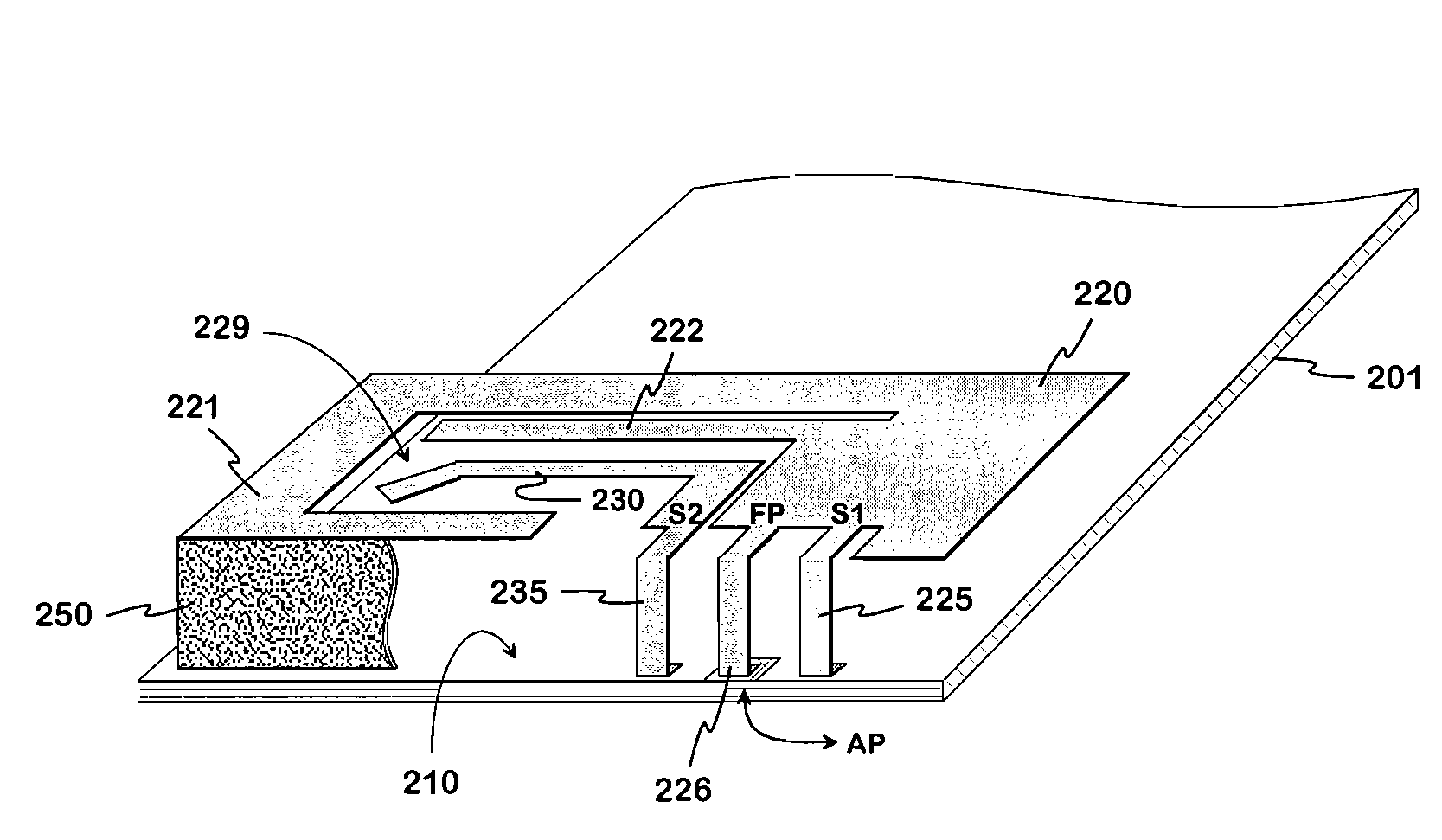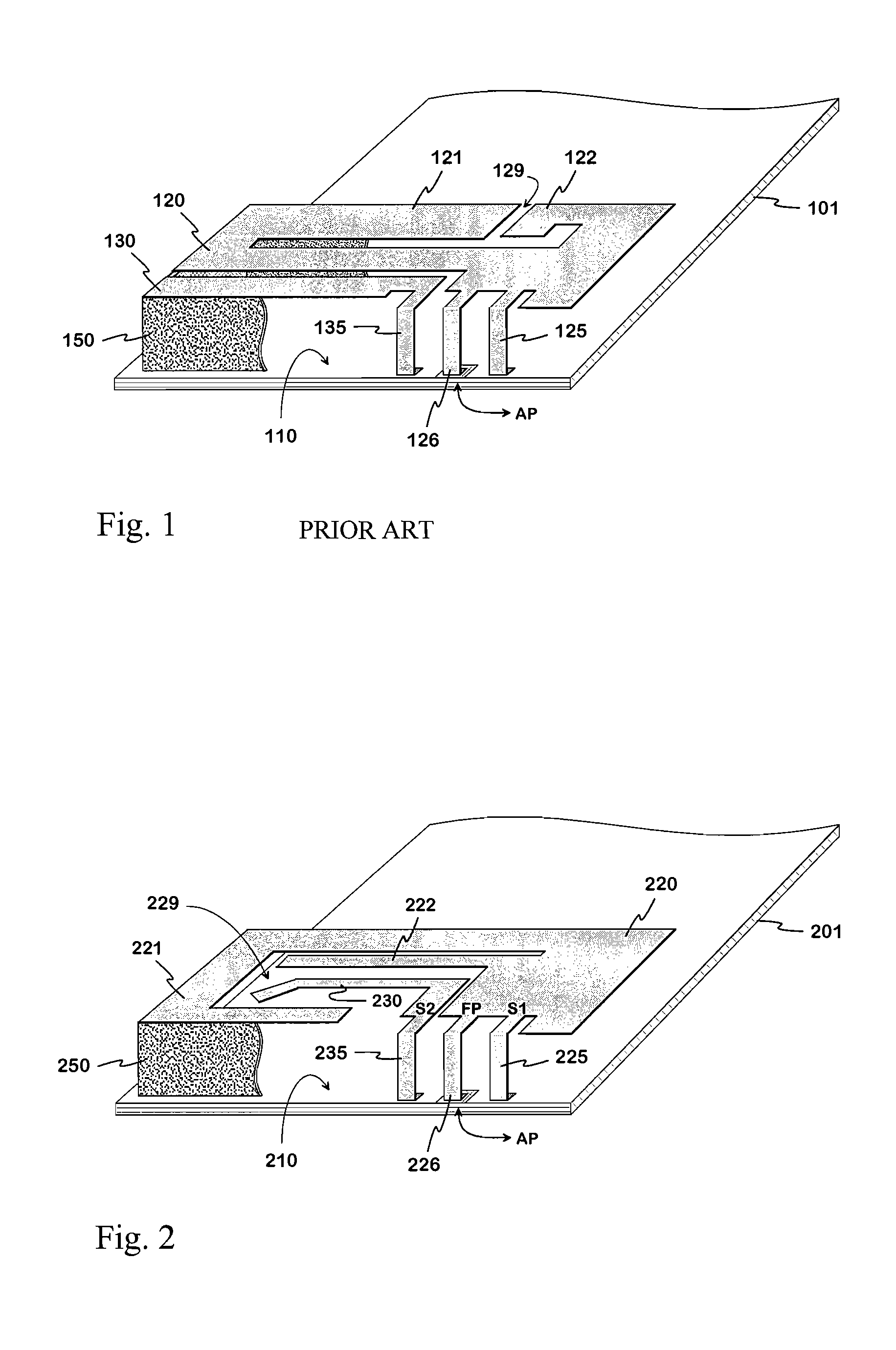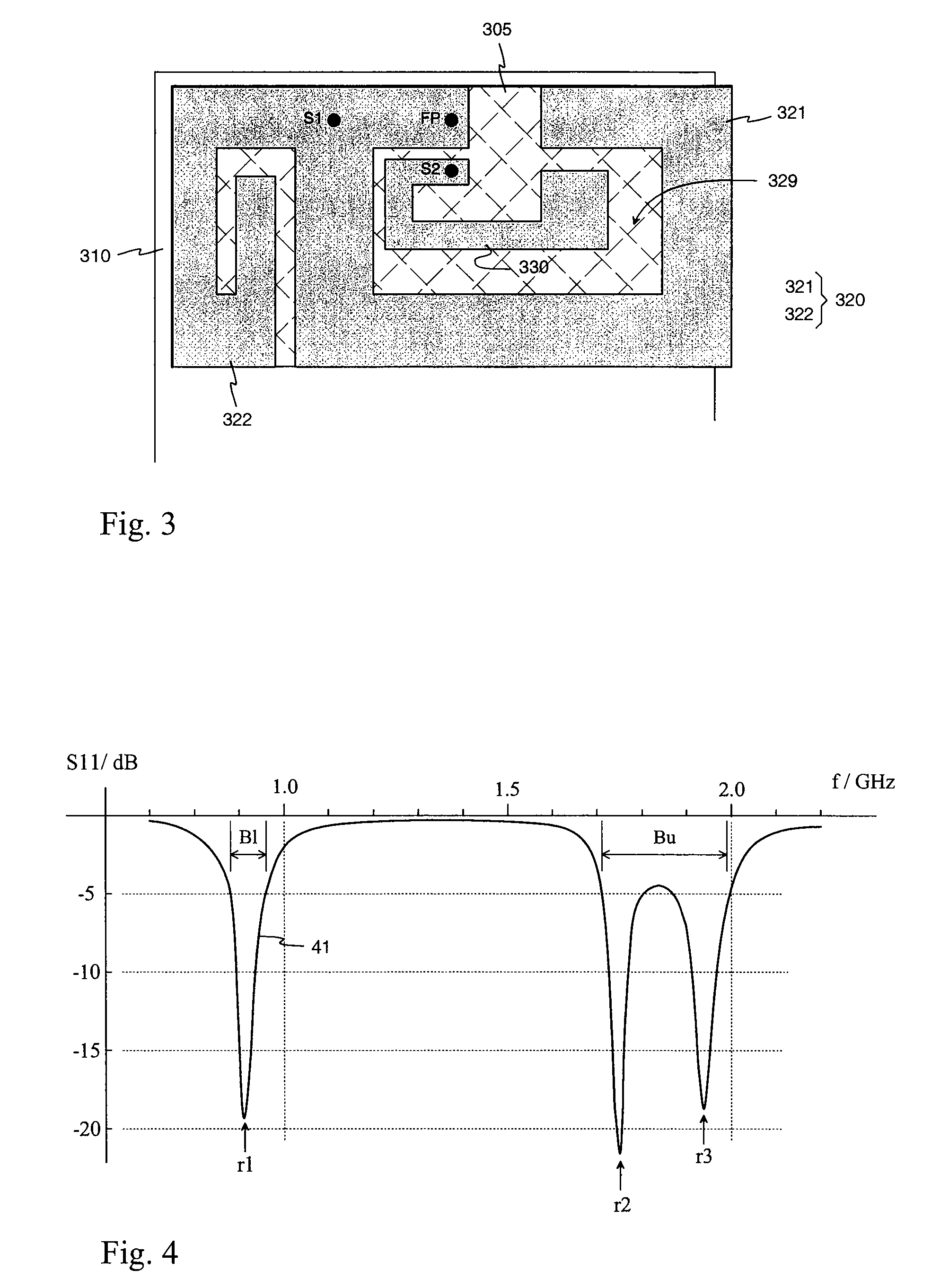Internal multiband antenna
a multi-band antenna and antenna technology, applied in the direction of antennas, antenna details, antenna earthings, etc., can solve the problems of difficult to make the upper operating band of the antenna sufficiently wide, and the adaptability of the antenna can become a problem, so as to increase the effect of the electric length of the elements and improve the matching of the antenna
- Summary
- Abstract
- Description
- Claims
- Application Information
AI Technical Summary
Benefits of technology
Problems solved by technology
Method used
Image
Examples
Embodiment Construction
[0017]FIG. 1 was dealt with above in connection with the description of the prior art.
[0018]FIG. 2 shows an example of an internal multiband antenna according to the invention. In the figure there is a circuit board 201 of a radio device with a conductive upper surface, which operates as the ground plane 210 of the antenna. At the one end of the circuit board, above the ground plane, there is the radiating plane 220 of the antenna, which has a rectangular outline. The first short-circuit conductor 225, connecting the radiating plane to the ground plane, starts from the edge of the radiating plane, one of its long sides. Its connecting point in the radiating plane is called the first short-circuit point S1. Close to the first short-circuit point in the radiating plane, there is the feed point FP of the whole antenna, from which the feed conductor 226 of the antenna starts. From the feed conductor there is a ground-isolated lead-through to the antenna port AP on the lower surface of t...
PUM
 Login to View More
Login to View More Abstract
Description
Claims
Application Information
 Login to View More
Login to View More - R&D
- Intellectual Property
- Life Sciences
- Materials
- Tech Scout
- Unparalleled Data Quality
- Higher Quality Content
- 60% Fewer Hallucinations
Browse by: Latest US Patents, China's latest patents, Technical Efficacy Thesaurus, Application Domain, Technology Topic, Popular Technical Reports.
© 2025 PatSnap. All rights reserved.Legal|Privacy policy|Modern Slavery Act Transparency Statement|Sitemap|About US| Contact US: help@patsnap.com



